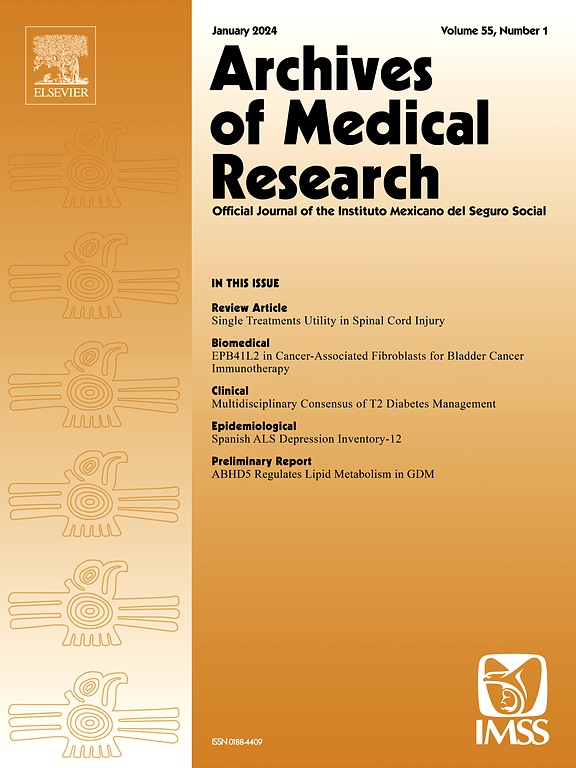Increased LDH Remains a Crucial Prognostic Factor in Patients With Multiple Myeloma
IF 3.4
3区 医学
Q1 MEDICINE, RESEARCH & EXPERIMENTAL
引用次数: 0
Abstract
Background and Aims
Multiple myeloma is the second most common hematologic cancer and remains incurable. Several prognostic factors have been identified, but many are costly and inaccessible to most hematology centers. To explore the clinical, laboratory, and cytogenetic factors that influence survival in patients with newly diagnosed multiple myeloma.
Methods
The research included 286 patients treated with different regimens: 64.5 % received thalidomide-based combinations, while 35.5 % were treated with proteasome inhibitor combinations.
Results
Stringent complete remission was achieved in 15.5 %, complete remission in 30.5 %, very good partial response in 41 %, and partial response in 5 %. Progression-free survival (PFS) and overall survival (OS) were lower in patients with high lactate dehydrogenase (LDH), renal disease, t(4;14), RB1 mutation, and in those who did not achieve complete remission or were not treated with transplantation and proteasome inhibitors. Elevated LDH was identified as the most significant independent prognostic factor. A scoring system based on LDH, renal disease, t(4;14), and RB1 mutation was developed and showed differences in PFS and OS based on the score (0,1,2,3, or 4,5 points).
Conclusions
An elevated LDH level was the most significant prognostic factor. A simple scoring system is suggested, especially for patients without access to expensive cytogenetic testing.
LDH升高仍然是多发性骨髓瘤患者预后的关键因素
背景与目的多发性骨髓瘤是第二常见的血液病,目前仍无法治愈。已经确定了几个预后因素,但许多因素昂贵且大多数血液学中心无法获得。探讨影响新诊断多发性骨髓瘤患者生存的临床、实验室和细胞遗传学因素。方法采用不同方案治疗的286例患者,其中以沙利度胺为主的联合用药占64.5%,蛋白酶体抑制剂联合用药占35.5%。结果严格完全缓解者占15.5%,完全缓解者占30.5%,非常好部分缓解者占41%,部分缓解者占5%。患有高乳酸脱氢酶(LDH)、肾脏疾病、t(4;14)、RB1突变、未达到完全缓解或未接受移植和蛋白酶体抑制剂治疗的患者的无进展生存期(PFS)和总生存期(OS)较低。LDH升高被认为是最重要的独立预后因素。建立了基于LDH、肾病、t(4;14)和RB1突变的评分系统,并根据评分(0,1,2,3或4,5分)显示PFS和OS的差异。结论LDH水平升高是影响预后的最重要因素。建议采用一种简单的评分系统,特别是对于无法获得昂贵的细胞遗传学检测的患者。
本文章由计算机程序翻译,如有差异,请以英文原文为准。
求助全文
约1分钟内获得全文
求助全文
来源期刊

Archives of Medical Research
医学-医学:研究与实验
CiteScore
12.50
自引率
0.00%
发文量
84
审稿时长
28 days
期刊介绍:
Archives of Medical Research serves as a platform for publishing original peer-reviewed medical research, aiming to bridge gaps created by medical specialization. The journal covers three main categories - biomedical, clinical, and epidemiological contributions, along with review articles and preliminary communications. With an international scope, it presents the study of diseases from diverse perspectives, offering the medical community original investigations ranging from molecular biology to clinical epidemiology in a single publication.
 求助内容:
求助内容: 应助结果提醒方式:
应助结果提醒方式:


